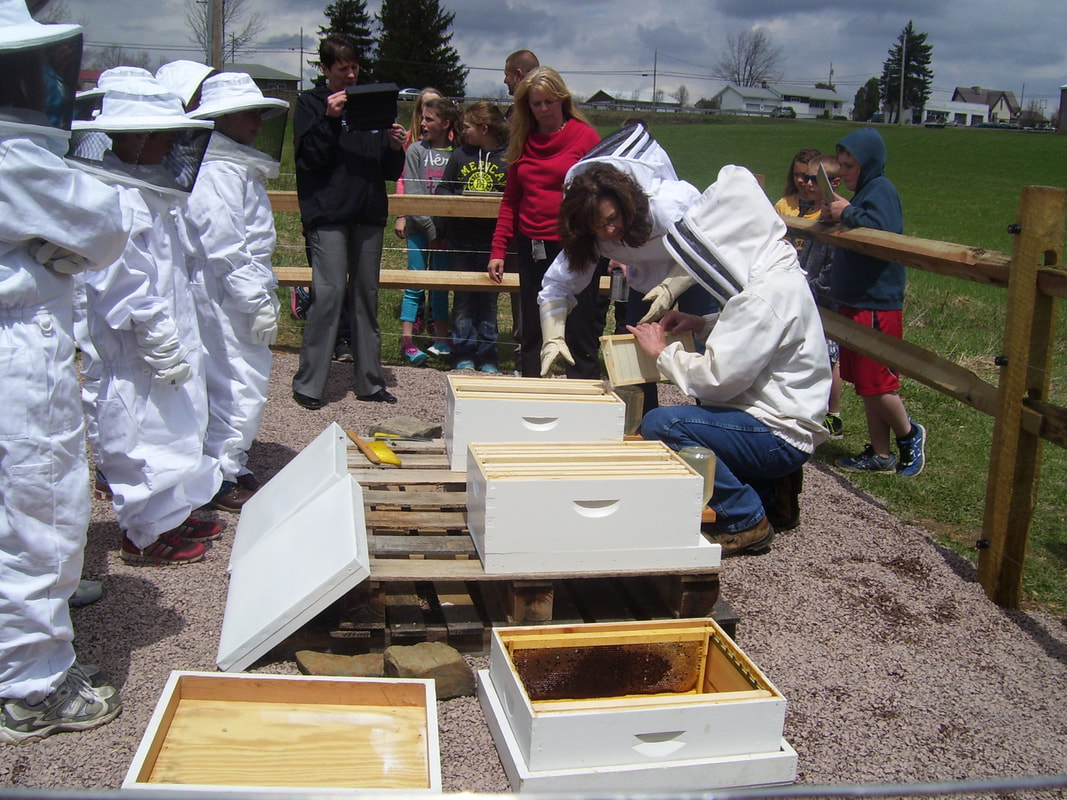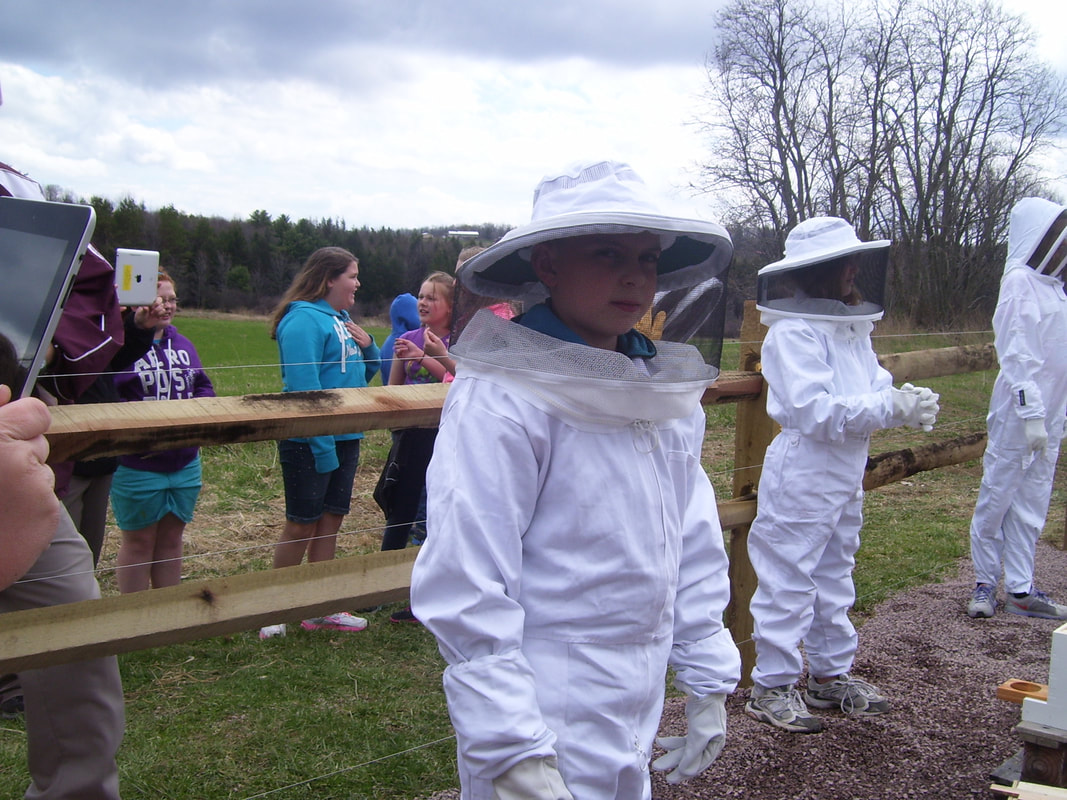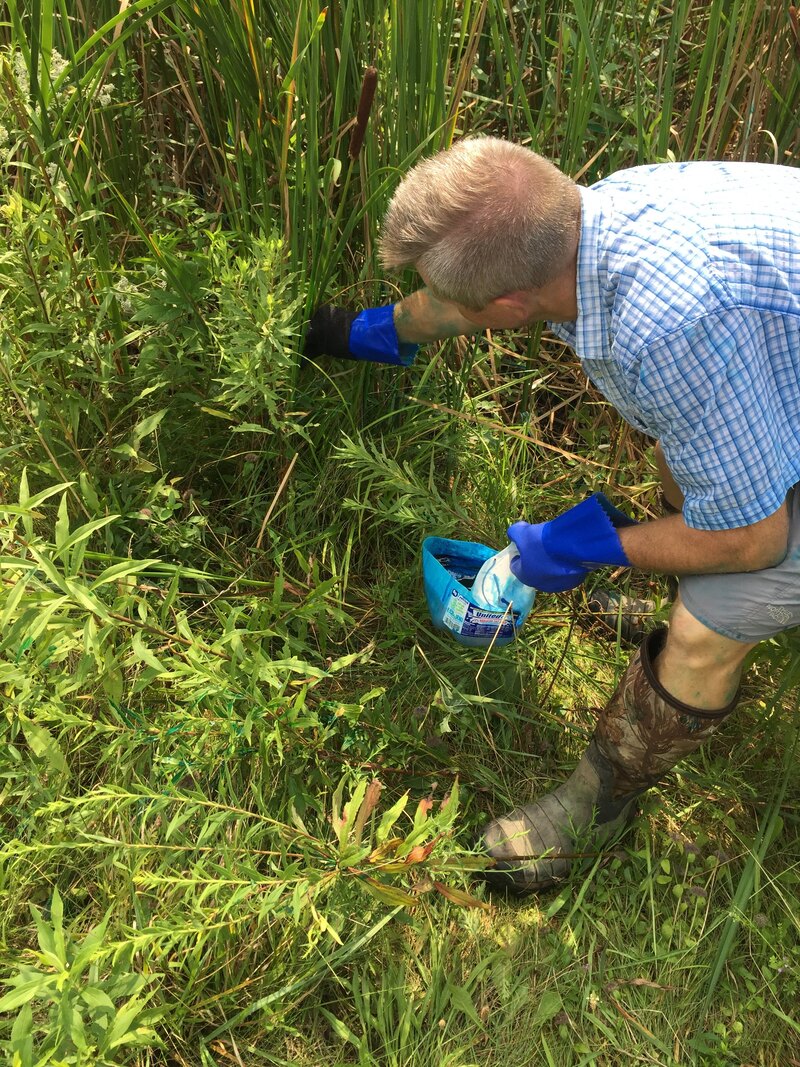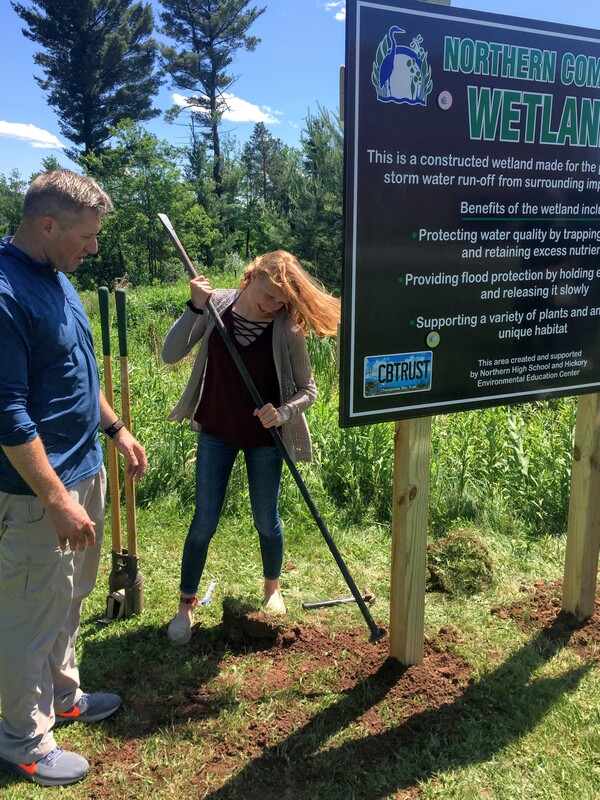Beekeeping Mentor
In 2014, Route 40 Elementary School obtained a grant to begin a honeybee apiary on the school grounds. HEEC staff member Sharon Hoover became a mentor during the planning phase of this project and continues to assist the students maintain the hive populations. Sharon and her husband maintain hives at HEEC and their home, so she has much knowledge about beekeeping and honey extraction to share with the teachers and students at the school. She regularly answers questions through phone conversations and emails and visits the apiary at the school at least once a year.
Following are email exchanges between the Route 40 principal and Sharon Hoover regarding beehive upkeep and visits to the school.
Your browser does not support viewing this document. Click here to download the document.
Your browser does not support viewing this document. Click here to download the document.
Wetland Restoration Project
From the fall of 2017 until the fall of 2019, HEEC collaborated with Northern Garrett High School to restore a constructed wetland on the campus and make it more useful as an outdoor learning structure. HEEC provided financial support for this project along with assisting in the planning and implementation of the restoration work. The major tasks completed were: reducing the cattail population in the wetland to allow for other beneficial native species to grow, invasive plant species removal, planting of native plant species, the construction of a viewing platform on one side of the wetland, and the installation of an informational sign at the front of the wetland.
Following are invoices and payment slips for materials paid for by HEEC for the wetland restoration project.
Your browser does not support viewing this document. Click here to download the document.
Your browser does not support viewing this document. Click here to download the document.
Your browser does not support viewing this document. Click here to download the document.
Your browser does not support viewing this document. Click here to download the document.




